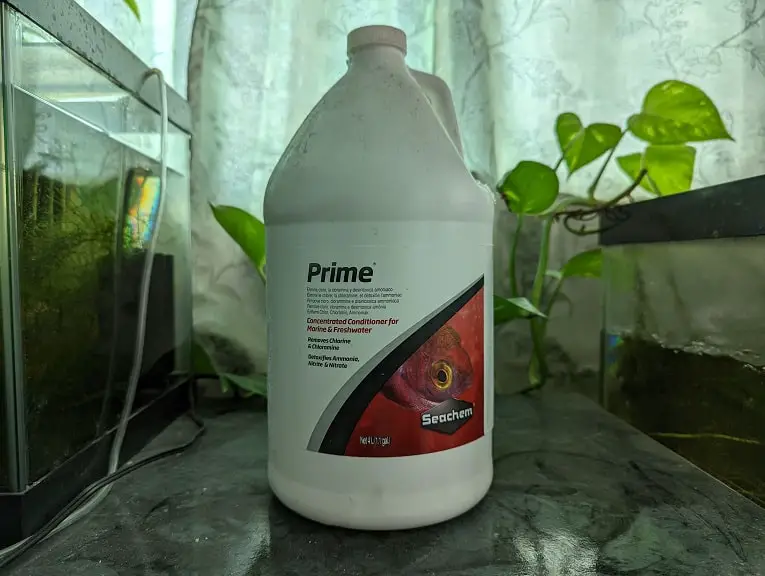Seachem Prime is an excellent water conditioner for your freshwater, brackish water or saltwater aquarium as it will remove chlorine, chloramine and small traces of heavy metals. Furthermore, it will also be able to detoxify ammonia, nitrites and nitrates for a maximum of 2 days.
Adding way too much Seachem Prime will lead to issues with your fish tank, however. You can check out this troubleshooting guide at Aquarium Blueprints to see what you can do when you severely overdose this water conditioner.
Seachem Prime Dosage Directions
Under normal circumstances, you are instructed to use 5 millimeters of Seachem Prime for every 50 gallons (or 200 liters) of water.
If you want to remove high concentration of chloramine, then you can use 10 millimeters of Prime per every 50 gallons (or 200 liters).
If you want to detoxify nitrites quickly, then you can use up to 25 millimeters of Seachem Prime for every 50 gallons (or 200 liters).
If the temperature of your fish tank is more than 86 °F or 30 °C, then Seachem recommends that you use only 2.5 millimeters of Prime per every 50 gallons (or 200 liters).

What happens when you overdose Seachem Prime?
In most cases, nothing will happen if you overdose Prime by a little amount.
In extreme scenarios where you add way too much (more than 2.5 millimeters for every 50 gallons/200 liters at up to 86 °F/30 °C or more than 2.5 millimeters for every 50 gallons/200 liters at above 86 °F/30 °C), then the oxygen levels of your aquarium of oxygen will deplete for up to 1 hour.
Your fish, shrimps, snails and other aquatic pets need oxygen to breath. Therefore, if you see them hanging out on the water surface trying to grasp for air, then you need to take action quickly.
How to fix a fish tank that has been overdosed with Seachem Prime
In order to fix your aquarium if you overdose it with Prime, you can try taking the following steps:
1. You most likely won’t have to do anything if you only overdose Seachem Prime by a little bit.
As we stated above, you can safely dose as much as 25 millimeters for every 50 gallons (or 200 liters) as long as your temperature of your fish tank is at or below 86 °F or 30 °C.
For hotter temperatures, you shouldn’t use more than 2.5 millimeters of Prime per every 50 gallons (or 200 liters).
2. If you believed that you overdosed with Seachem Prime and the temperature of your tank water is above 86 °F or 30 °C, then we recommend temporary setting your heater to below 86 °F/30 °C.
3. The next step you can take is to increase the surface agitation of your tank.
You can do so by using a bubble store, increasing the air output for a bubble stone, increasing the flow of your filter as well as adjusting the filter outtake in order to get more movement of the water surface. You can also try stirring the top of the water using an aquarium-safe object.
The increased agitation will promote more gas exchange, which will increase the oxygen levels coming into your tank water.
4. You can also try doing a partial water change of no more than 20%. We recommend less than 10% if you have sensitive species such as shrimps.
A water change should remove some of the Seachem Prime and dilute its concentration.
We don’t recommend swapping out more than 20% of the water as the changing water parameters may end up stressing and harming the inhabitants of your tank.
5. By lowering the temperature from 86 °F/30 °C, increasing the surface agitation and/or doing a partial water change, you most likely won’t have to do anything else.
With that said, we recommend keeping an eye on your fish or other aquatic pets to see if they are still trying to gasps for air for 1 hour after the overdose. If you are still seeing this behavior, then we recommend increasing the surface agitation.
6. After an hour has passed since the overdose of Prime, you should be in the clear.
Therefore, you should be able to return the temperature, bubble stone and/or filter flow to their previous levels.
